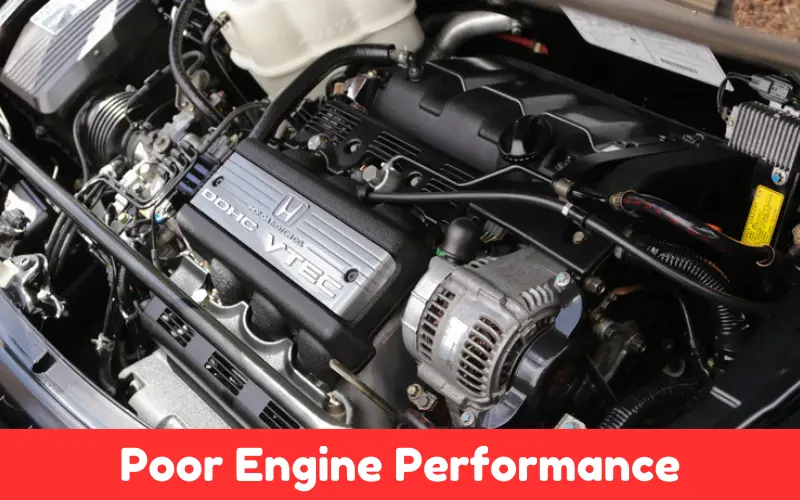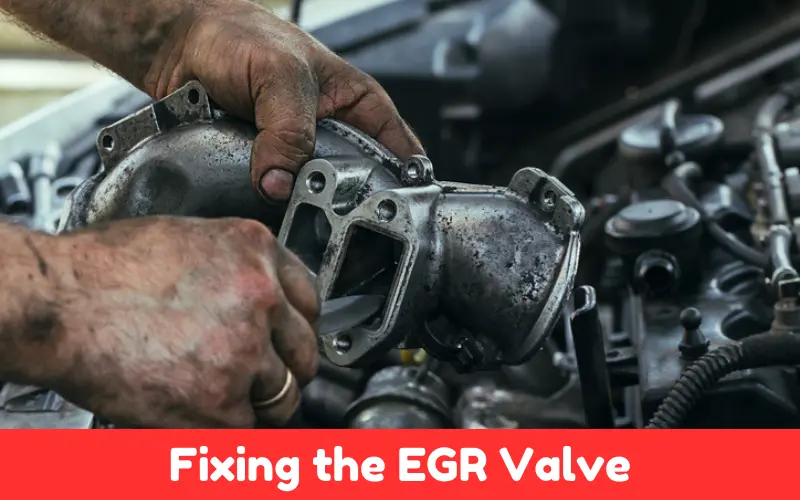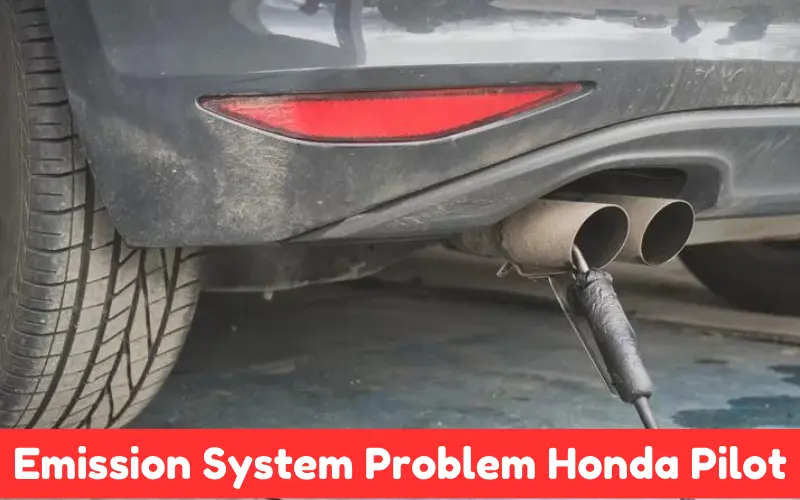Honda Pilots can also suffer persistent problems with the emission system or the device responsible for ensuring your vehicle is following environmental laws and running as optimally as possible.
Your emission system must be in good condition to pass emissions tests. It improves the efficiency of your fuel, reduces the amount of pollution released into the atmosphere, and protects your vehicle from damaging components.
In this blog, we are going to highlight common emission system problems in the Honda Pilot, signs that signify there is an issue, and things you can do to fix the emission system problem Honda Pilot.
Article Summary
What is the Emission System?
The emission system of a vehicle is a system that controls and minimizes harmful pollutants that could leave the car.
It contains needed parts, such as the Catalytic converter, the O2 sensor, and the exhaust gas recirculation (EGR) valve.
The emission system is incredibly significant to the Honda Pilot in maintaining the standards of the environment and optimal operation.
Causes of Emission System Problem Honda Pilot
While driving your vehicle’s emission system can be bad at any time. But there are some common problems regarding emission system. Some of the emission system problems are given below.
Check Engine Light (CEL) Activation
One of the first signs that your emission system is having trouble is that your Check Engine Light on the dashboard comes on.
Causes: Bad O2 sensor, bad catalytic converter, bad EGR valve.
Increased Fuel Consumption
I’m hearing that your Honda Pilot is running rich, and it might be a problem with the emission system.
Causes: This could have led to incomplete combustion of oxygen in the fuel and, hence, higher consumption of fuel.
Poor Engine Performance
Your vehicle can suffer reduced acceleration or rough idling, sometimes due to emission system problems.

Causes: Problems with the EGR valve or a cracked/damaged catalytic converter can impede the flow of the engine.
Failed Emissions Test
If your Honda Pilot fails its emissions test, then intuitively, there is something wrong with the emission system.
Causes: Common issues include a damaged catalytic converter or a malfunctioning oxygen sensor.
Diagnosing Emission System Problems
A diagnostic scanner is necessary to get an accurate diagnosis of an emission system problem. The error codes mentioned above can be obtained by connecting this device to the vehicle’s on board computer.
Visual inspection and performance tests on parts such as the oxygen sensors and catalytic converter can also give clues.
Replacing Faulty Oxygen Sensors
Oxygen sensors monitor the amount of oxygen in the exhaust gases to make sure the air fuel ratio is right.
Starting or revving the motor without a functioning sensor can demand more parts for operation, a drain on the fuel supply. Replacing the sensor will negate bad air fuel ratios and result in better engine performance.
Repairing or Replacing the Catalytic Converter
If the catalytic converter is broken or blocked, it needs to be repaired or replaced. It converts dangerous gases into less harmful emissions.
Fixing the EGR Valve
A malfunctioning EGR valve that is cleaned or replaced should rehabilitate engine performance and emissions.

Regular Maintenance
By regularly checking and replacing air and fuel filters as well as essential fluids like motor oil, you can avoid emission system issues.
Tips for the Emission System Problems in Honda Pilot
Here are a few of the most common tips for emission system problems in the Honda Pilot.
Regular Maintenance and Inspections
The best way to prevent your Honda Pilot from having emission problems is to maintain your vehicle according to the manufacturer’s instructions.
This includes checking filters, fluids, spark plugs, and other components as specified in the owner’s manual. It’s also important to look for warning signs to detect problems before they grow into bigger issues.
Action Steps:
- Follow the maintenance schedule outlined in your vehicle’s owner’s manual.
- Get your emission system parts, including the catalytic converter and oxygen sensors checked out by a mechanic.
Use Quality Fuel
Fuel quality is just one of the factors that can impact the emission system. Other factors include contaminated or poor quality fuel. Deposits can collect in the catalytic converter and elsewhere in the system if the wrong fuel is used.
Action Steps:
- Purchase fuel from reputable gas stations that offer high quality, clean fuel.
- Avoid frequently using low grade or off-brand fuels.
Address Warning Lights Promptly
If the CELL or any other lights indicating problems with the emission system come on, check and correct the fault right away.
Failure to deal with them as soon as they occur can lead to more serious damage and more expensive repairs.
Action Steps:
- As soon as the light turns on, get the vehicle’s error codes read with a diagnostic scanner.
- If your car has a warning light that turns on or stays on, don’t ignore it. Take your Honda Pilot to a qualified person to diagnose and repair it.
Avoid Short Trips
Too many short trips can keep your engine from reaching proper operating temperature something vital for your emission system to perform its best. A cold engine means incomplete combustion, which translates into more emissions.
Action Steps:
- Wherever it’s possible, combine your errands or drive for a while until your engine warms up.
- If you are taking short trips often, you should have periodic longer drives to ensure the emission system works well.
FAQs on Emission System Problems Honda Pilot
What Are the Signs of An Emission System Problem in A Honda Pilot?
Turning on the Check Engine Light, increased fuel consumption, poor engine performance, and a failed emission test are the main signs of an emission system failure. If any of those signs are present, your vehicle should be immediately checked.
How Can I Diagnose Emission System Issues?
To diagnose the problem in the emission system, error codes will be gathered from your vehicle’s computer through the use of a diagnostic scanner and should be followed up with a visual inspection, as well as component tests for the oxygen sensors (replacing is possible), catalytic converter, and EGR valve.
What Should I Do If My Honda Pilot Fails An Emissions Test?
If a car called in for an emissions check fails the inspection, that is an indication that there is a problem with its emission system. A competent mechanic should be able to diagnose the particular failure, whether it is a faulty catalytic converter, a malfunctioning oxygen sensor, or a different emission related pump or sensor.
Can Emission System Problems Affect My Vehicle’s Fuel Efficiency?
Yes. By increased fuel consumption, we mean more gas/petrol used than the standard used by the same car model. This is because emission system problems can cause the previous combustion towards the heresy engine to be determinant, which can cause the engine to deteriorate. An emission system has many components, i.e., the catalytic or the oxygen sensor. If the catalytic is full of dust or the oxygen sensor is not functioning properly, this can cause the combustion inside the conduit to be in the pellicle and hence cause the engine inside the heresy to become inefficient and ineffective.
How To Maintain Emission System in My Honda Pilot?
Regular checkups help solve the problem of the emission system. Therefore, to prevent the emission system from failing, you should have your vehicle inspected regularly. When having your car maintained, the filter, fluid, as well as emission system components should be checked to decide if they need to be replaced.
Conclusion
Common emission system problems in the Honda Pilot can lead to larger issues for the environment as well as your vehicle.
If you want to keep your emission system in working order and running well, it’s important to know the most common problems and how to solve them.
Your Honda Pilot is a highly rated and dependable vehicle, so maintaining it properly through regular maintenance will keep it working well and running efficiently.

